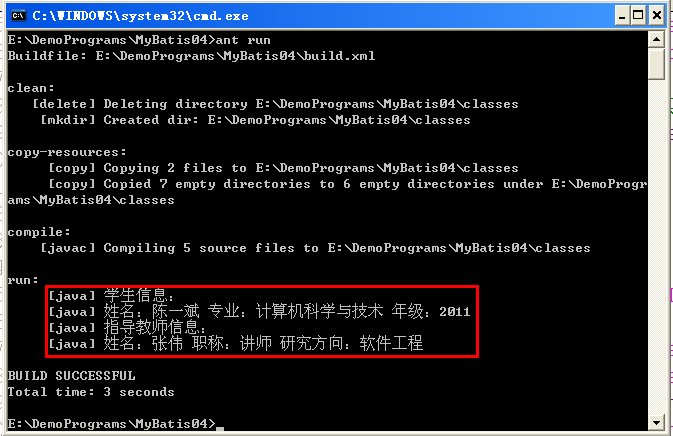一、嵌套的resultMap
这种方法本质上就是上篇博文介绍的方法,只是把教师实体映射从association元素中提取出来,用一个resultMap元素表示。然后association元素再引用这个resultMap元素。修改上篇博文示例的StudentMapper.xml如下:
<?xml version="1.0" encoding="utf8"?>
<!DOCTYPE mapper PUBLIC "-//mybatis.org//DTD Mapper 3.0//EN" "http://mybatis.org/dtd/mybatis-3-mapper.dtd">
<mapper namespace="com.abc.mapper.StudentMapper">
<select id="getById" parameterType="int" resultMap="studentResultMap">
select s.id s_id,
s.name s_name,
s.gender s_gender,
s.major s_major,
s.grade s_grade,
t.id t_id,
t.name t_name,
t.gender t_gender,
t.title t_title,
t.research_area t_research_area
from student s left join teacher t
on s.supervisor_id = t.id
where s.id=#{id}
</select>
<resultMap id="studentResultMap" type="Student">
<id property="id" column="s_id"/>
<result property="name" column="s_name"/>
<result property="gender" column="s_gender"/>
<result property="major" column="s_major"/>
<result property="grade" column="s_grade"/>
<!--使用resultMap属性引用下面的教师实体映射-->
<association property="supervisor" javaType="Teacher"
resultMap="supervisorResultMap"/>
</resultMap>
<!--教师实体映射-->
<resultMap id="supervisorResultMap" type="Teacher">
<id property="id" column="t_id"/>
<result property="name" column="t_name"/>
<result property="gender" column="t_gender"/>
<result property="researchArea" column="t_research_area"/>
<result property="title" column="t_title"/>
</resultMap>
</mapper>
在这里,为了让select语句更加清晰可读,每个字段都使用了别名。association元素的属性javaType="Teacher"可以不要,不像上篇博文示例那样,没有此属性即报错。这大概是因为引用的resultMap元素已经指明了映射的类型为“Teacher”。另外,今天偶然发现,把StudentMapper.xml的encoding属性由“UTF-8”改为“utf8”即可添加中文注释。
运行结果如下:
这种方式的好处是此resultMap元素可在其它地方被重用(可在博文下方附件下载处下载示例源码)。
二、嵌套的select语句
这种方式是使用一条单独的select语句来加载关联的实体(在本例中就是教师实体),然后在association元素中引用此select语句。修改StudentMapper.xml如下:
<?xml version="1.0" encoding="utf8"?>
<!DOCTYPE mapper PUBLIC "-//mybatis.org//DTD Mapper 3.0//EN" "http://mybatis.org/dtd/mybatis-3-mapper.dtd">
<mapper namespace="com.abc.mapper.StudentMapper">
<select id="getById" parameterType="int" resultMap="studentResultMap">
select id,name,gender,major,grade,supervisor_id from student where id=#{id}
</select>
<select id="selectSupervisor" parameterType="int" resultMap="supervisorResultMap">
select id,name,gender,title,research_area
from teacher where id=#{id}
</select>
<resultMap id="studentResultMap" type="Student">
<id property="id" column="id"/>
<result property="name" column="name"/>
<result property="gender" column="gender"/>
<result property="major" column="major"/>
<result property="grade" column="grade"/>
<!--column="supervisor_id"不能少。此列的值作为参数
传递给要引用的select语句,用来查询相应学生的指导教师
的信息。select属性指定要引用的select语句-->
<association property="supervisor" javaType="Teacher"
column="supervisor_id" select="selectSupervisor"/>
</resultMap>
<!--教师实体映射-->
<resultMap id="supervisorResultMap" type="Teacher">
<id property="id" column="id"/>
<result property="name" column="name"/>
<result property="gender" column="gender"/>
<result property="researchArea" column="research_area"/>
<result property="title" column="title"/>
</resultMap>
</mapper>
association元素的属性javaType="Teacher"也可以不要,这大概也是因为引用的select语句中已经指明了要用到的resultMap。























 447
447











 被折叠的 条评论
为什么被折叠?
被折叠的 条评论
为什么被折叠?








